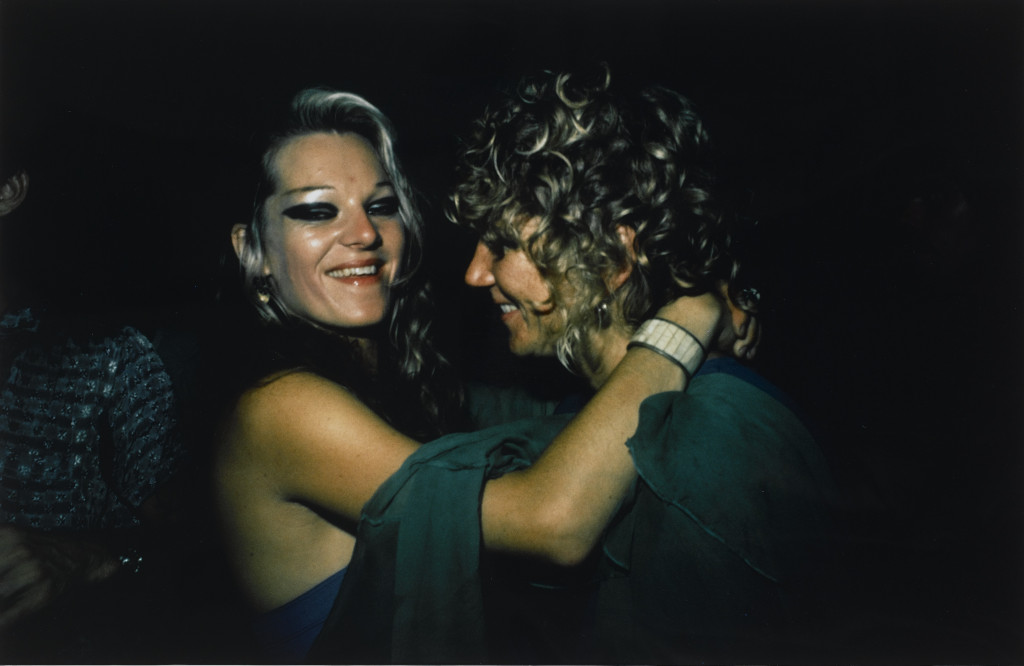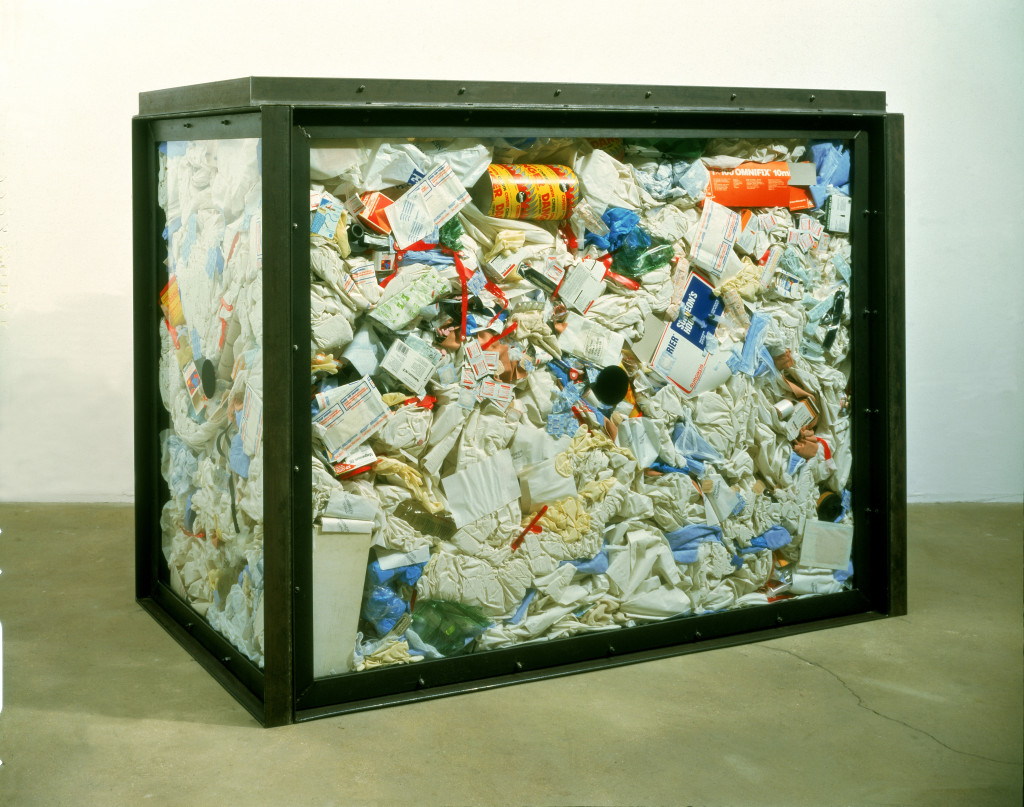Sunday Seminar Opening Stedelijk Base
Curating the Collection
Theory — Dec 17, 2017
- Price
- Museumkaart € 3 (excl. entreeticket) / Studenten € 11 (excl. entrance ticket) / Regular € 20,50
- Location
- Teijin Auditorium
- Time
- Dec 17, 2017, 2.30 pm until 4 pm
- Main language
- English
- Admission
- Tickets
During the STEDELIJK BASE opening weekend, the museum will organize a Sunday Seminar in which experts will discuss the exhibition’s context and offer critical analyses. What role does this collection presentation play in the new layout of the Stedelijk? What is the meaning of the experimental exhibition design? How does the exhibition relate to the broader debate on how to exhibit collections? How does the mix of art and design work? These and other issues will be discussed by curators, scholars and critics. Guest speakers are, among others: Rem Koolhaas (AMO/Rem Koolhaas), Ann Demeester (Frans Hals Museum | De Hallen Haarlem), Dr. Rachel Esner (University of Amsterdam), Dr. Fieke Konijn (VU University, Amsterdam), Madeleine van Lennep (BNO, The Association of Dutch Designers), Bart van der Heide and Margriet Schavemaker (Stedelijk Museum Amsterdam).
BASE
STEDELIJK BASE is the permanent installation of iconic works from the collection of the Stedelijk Museum. It occupies the entire new wing of the museum and features a selection of around 700 pieces grouped around historic movements, social themes, and influential artists. All media are considered equally important, and are also in dialogue with each other. The exhibition design in the Lower Level Gallery has been developed by AMO/Rem Koolhaas together with Federico Martelli. It proposes an innovative way to present the permanent collection. Bold architecture and the latest technological developments combine to allow visitors to experience the collection through an open-ended route. The chronology can be followed on the perimeter, while freestanding walls in the middle create separate sectors highlighting groups of artworks that represent a specific theme or aspect of the collection.

REVISED LAYOUT AND DYNAMIC COLLECTION PRESENTATION
STEDELIJK BASE is the finale of the museum’s revised spatial design; the building now has a clearer layout, and 70 percent of the museum’s space is devoted to the collection. While STEDELIJK BASE is devoted to the highlights (artworks in the art historical canon), STEDELIJK TURNS sheds light on hidden or suppressed stories, and unseen or rarely exhibited artworks. On the ground floor of the historic building, STEDELIJK TURNS presents a changing program of collection displays, each showcasing new perspectives, research, and topical themes. These alternative perspectives will inspire changes in STEDELIJK BASE. Consequently, STEDELIJK BASE will be a dynamic, changing presentation that, over the next five years, will invite visitors to experience the transformation of the canon.
![Gerrit Rietveld, Rood-blauwe stoel, 1919-1923 [ontwerp] ca. 1950 [uitvoering]. c/o Pictoright Amsterdam. Collectie Stedelijk Museum Amsterdam](https://s3-eu-west-1.amazonaws.com/production-static-stedelijk/images/BASE/scaled/1024/10_original.jpg)
THEME ISSUE OF STEDELIJK STUDIES
Issue #5 of Stedelijk Studies, a peer-reviewed online journal, appeared in fall 2017 and is dedicated to the theme “Curating the Collection.” This special issue, edited by Dr. Rachel Esner and Dr. Fieke Konijn, offers an overview of topical debates concerning collection presentations and includes a roundtable discussion that sheds light on the ideas behind STEDELIJK BASE and TURNS.
PROGRAM
2.30 pm welcome
2.40 pm roundtable: exhibition design & reseach
3.00 pm questions from the audience
3.10 pm column: curating the collection perspective
3.20 pm roundtable: curating the collection
3.50 pm questions from the audience
4.00 pm exhibition visit STEDELIJK BASE

MORE ABOUT THE SPEAKERS
Ann Demeester has been Director of the Frans Hals Museum | De Hallen Haarlem since 1 February 2014. From 2006 to 2014 she was General and Artistic Director of the Amsterdam De Appel arts center. Prior to that, she was director of W139, curator (2003-2006), and adjunct of Jan Hoet at Marta Herford, Germany (2001-2003). She studied Cultural Studies (postgraduate) at the Catholic University in Leuven, Belgium (1997-1998), English and Norwegian Literature at the University of Bergen, Norway (1995-1996) and Germanic Philology at the University of Ghent, Belgium (1993-1997).
Hans Lentz is Coordinator of Exhibition Installation at the Stedelijk Museum Amsterdam and was responsible for the execution of the exhibition design of Stedelijk BASE. Since 2012 he has led exhibition projects at the Stedelijk Museum, ranging from small presentations to large and complex projects. Examples include the immersive exhibition design for media artists Aernout Mik and Ed Atkins. In 2012 he was in charge of the building team for the collection presentation of the newly reopened museum building under artistic director Ann Goldstein. Now, five years later, Lentz leads the large reorganization of the museum’s collection presentation according to the set-up developed by former director Beatrix Ruf in collaboration with AMO/Rem Koolhaas.
Bart van der Heide is Chief Curator and Head of Research at the Stedelijk Museum Amsterdam. He is responsible for developing and implementing the museum’s policy on exhibitions and collection presentations, as well as scholarly research projects. Prior to working at the Stedelijk Museum, he was director of the Kunstverein München and curator at Cubitt Gallery in London and at Witte de With in Rotterdam, where he has published on and curated exhibitions with artists including Trisha Baga, Bernadette Corporation, Keren Cytter, Ger van Elk, Harun Farocki, Ian Kiaer, Tobias Madison, Richard Tuttle, Tris Vonna-Michell, Rebecca Warren, Cathy Wilkes and Haegue Yang.
Fieke Konijn is an art historian and critic based in Amsterdam. Together with Rachel Esner she is co-editor of fifth issue of the peer-reviewed online journal Stedelijk Studies, which is dedicated to the theme “Curating the Collection”. She has taught at the Art History department of VU University in Amsterdam, where she was head of the master’s program on museum curating from 2003 to 2015. Her research interests are focused on the institutional history of the modern art museum, including modern and recent histories of curating, exhibitions and display modes.
Margriet Schavemaker is Manager of Education, Interpretation and Publications at the Stedelijk Museum Amsterdam and co-curator of Stedelijk BASE. In her position as manager she leads the educational and public programs and the publication policy of the museum. As a curator she developed Nalini Malani: Transgressions (2017), Zero: Let us explore the stars (2015) and The Stedelijk Museum & the Second World War (2015). She studied art history and philosophy at the University of Amsterdam and defended her PhD thesis Lonely Images: Language in the Visual Arts of the 1960s in 2007. She has also organised events such as the highly praised lecture series ‘Right about Now: Art and Theory since the 1990s’ (2006-2007), ‘Now is the Time: Art and Theory in the 21st Century’ (2008-2009) and ‘Facing Forward. Art and Theory from a Future Perspective’ (2011-2012).
Rachel Esner is Associate Professor of Modern and Contemporary Art History at the University of Amsterdam and coordinator of the professional master’s program Curating Art and Cultures. Together with Fieke Konijn she is co-editor of the fifth issue of the peer-reviewed online journal Stedelijk Studies, which is dedicated to the theme “Curating the Collection”. Rachel Esner is a specialist in the art of the nineteenth century and its reception, the image of the artist in art and popular media, and the history of museums and exhibitions. She is the author of numerous articles and the editor of a variety of anthologies.
Madeleine van Lennep is Director of BNO, the Association of Dutch Designers. The largest collective of designers in the Netherlands, BNO connects and represents all design disciplines: communication design, product design, spatial design and service design. She has held various positions within the cultural field, in which she connected cultural policy to practices in visual art, design and cultural heritage. She has worked with the Dutch Council for Culture and was adjunct director of the Mondriaan Stichting and the later Mondriaan Fonds, which arose from the merger with the Fonds BKVB (Foundation for Visual Arts, Design and Architecture).
Rem Koolhaas is the exhibition architect of Stedelijk BASE, which he developed within AMO, the research branch of the OMA architecture office, in association with Federico Martelli. Koolhaas founded OMA in 1975 with Elia and Zoe Zenghelis and Madelon Vriesendorp. His built work includes the Garage Museum of Contemporary Art in Moscow (2015), Fondazione Prada in Milan (2015), the headquarters for China Central Television (CCTV) in Beijing (2012), Casa da Musica in Porto (2005), Seattle Central Library (2004), and the Netherlands Embassy in Berlin (2003). He graduated from the Architectural Association in London and published Delirious New York: A Retroactive Manifesto for Manhattan in 1978. In 1995 his book S,M,L,XL summarized the work of OMA in "a novel about architecture". Koolhaas is a professor at Harvard University and in 2014 he was the director of the 14th International Architecture Exhibition of the Venice Biennale, entitled Fundamentals.


